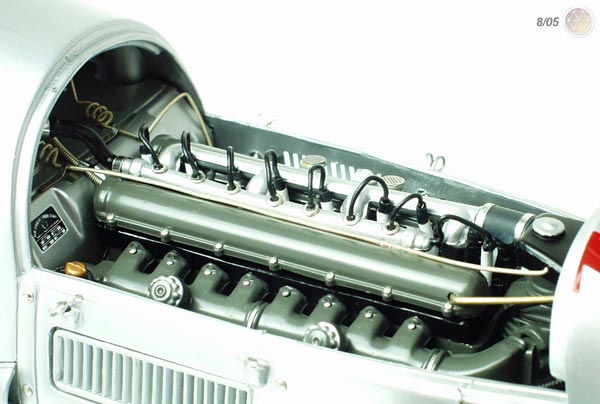Mercedes-Benz W125
The Mercedes-Benz W125 was a Grand Prix racing car designed by Rudolf Uhlenhaut to race during the 1937 Grand Prix season. The car was used by Rudolf Caracciola to win the 1937 European Championship and W125 drivers also finished in the second, third and fourth positions in the championship.The supercharged engine, with 8 cylinders in line (94.0 x 102.mm) and 5,662.85 cc (345.56 CID), attained an output of up to 595 horse power (444 kW) in race trim. The highest test bed power measured was 637 BHP (646 PS) at 5,800 rpm. It gave 245 BHP (248 PS) at a mere 2,000 rpm. In 1938, the engine capacity of supercharged Grand Prix cars was limited to 3000cc, and the W125 was replaced by the Mercedes-Benz W154.The W125 was considered the most powerful race car ever for about 3 decades, until large capacity US-built V8 engines in CanAm sportcars reached similar power in the mid 1960s. In Formula One racing itself, the figure was not exceeded until the early 1980s, with the appearance of turbo-charged engines in Formula One.The W125 reached race speeds of well over 300 km/h (190 mph) in 1937, especially on the AVUS in Berlin, equipped with a streamlined body.In land speed record runs, a Mercedes-Benz W125 Rekordwagen was clocked at 432.7 km/h (268.9 mph) over a mile and a kilometer. This car was fitted with a DAB V12 engine (82.0 x 88 mm) of 5,576.75 cc (340.31 CID) with a power of 726 BHP (736 PS) at 5,800 rpm. The weight of this engine caused the car to weigh over the 750 kg maximum limit, so it never appeared in Grand Prix.





















.jpg)








0 comments:
Post a Comment